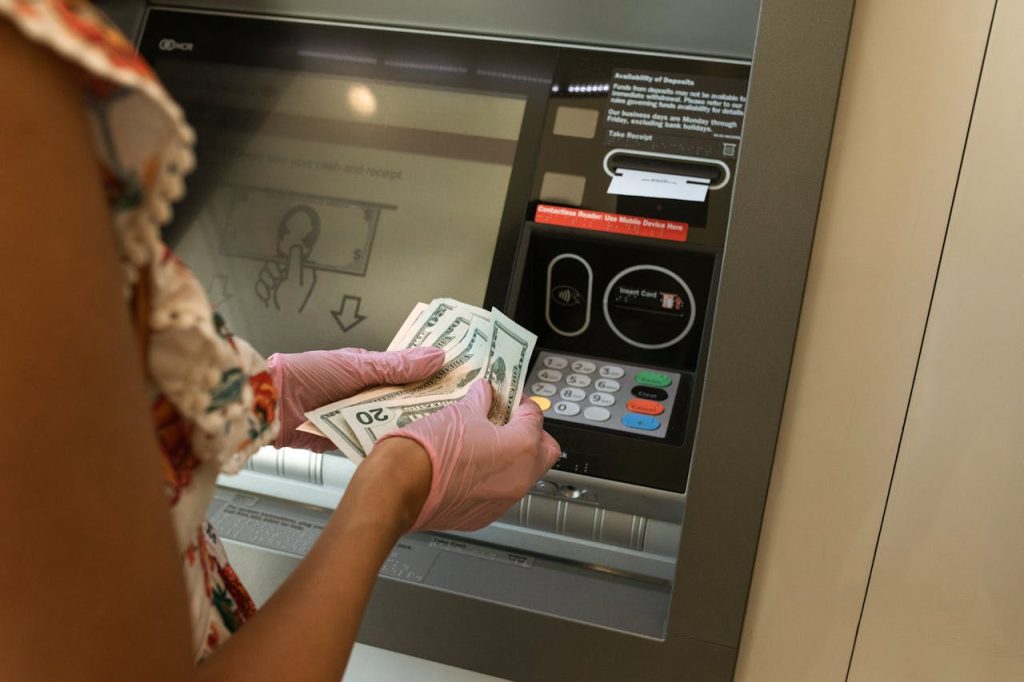
Picture Supply: pexels.com
Banking ought to make your life simpler, not quietly drain your pockets. But, many individuals are shedding cash to sneaky financial institution charges they barely discover—till it’s too late. These costs can add up quick, consuming into your hard-earned money and making it tougher to achieve your monetary objectives. The excellent news? Most of those charges are avoidable if you already know what to search for and sidestep them. Understanding the commonest financial institution charges and dodge them will help you retain more cash in your pocket. Let’s break down the eight most typical sneaky financial institution charges and provide you with sensible tricks to keep away from them.
1. Month-to-month Upkeep Charges
Month-to-month upkeep charges are one of the crucial widespread financial institution charges, and so they can quietly chip away at your steadiness. Banks usually cost these charges only for protecting your account open, particularly for those who don’t meet particular necessities like sustaining a minimal steadiness or organising direct deposit. These charges can vary from $5 to $15 per 30 days, totaling $60 to $180 per yr. To dodge this payment, search for banks that supply no-fee checking or financial savings accounts. Many on-line banks and credit score unions present free accounts with no strings hooked up. When you choose your present financial institution, ask about methods to waive the payment—typically, organising a recurring direct deposit or protecting a sure steadiness is all it takes.
2. Overdraft Charges
Overdraft charges are a basic instance of a sneaky financial institution payment that may catch you off guard. When you spend greater than you’ve in your account, your financial institution could cowl the transaction however hit you with a hefty payment, usually $35 or extra per incident. Some banks even cost a number of overdraft charges in a single day. To keep away from this, decide out of overdraft safety, which can appear useful however usually ends in extra charges. As an alternative, arrange low-balance alerts and hyperlink your checking account to a financial savings account for computerized transfers.
3. ATM Charges
Utilizing an out-of-network ATM can price you twice, as soon as out of your financial institution and once more from the ATM proprietor. These charges can whole $4 or extra per transaction. When you withdraw money a couple of instances a month, that’s a major hit. To dodge ATM charges, use your financial institution’s ATM locator app to search out free machines close by. Some banks additionally reimburse ATM charges as much as a specific amount every month, so contemplate switching in case your present financial institution doesn’t supply this perk. Alternatively, you’ll be able to earn money again at grocery shops when making purchases, which is normally free.
4. Paper Assertion Charges
Banks are more and more charging for paper statements, with charges starting from $2 to $5 per 30 days. Though it might appear minor, this payment is well avoidable. Swap to digital statements, which aren’t solely free but additionally safer and environmentally pleasant. Most banks make it simple to decide in to e-statements by means of their on-line banking portal. When you want a paper copy to your information, you’ll be able to normally print one at residence.
5. Extreme Transaction Charges
Financial savings accounts are designed for saving, not frequent transactions. Many banks restrict the variety of withdrawals or transfers you can also make from a financial savings account every month. Exceeding the restrict could end in a payment of $10 or extra per extra transaction. To keep away from this, hold your financial savings and spending separate. Use your checking account for on a regular basis transactions and reserve your financial savings account for, effectively, saving. When you steadily have to switch cash, contemplate a checking account with no transaction limits.
6. Overseas Transaction Charges
Touring overseas or buying on-line from worldwide retailers? You may be paying overseas transaction charges with out realizing it. These charges, sometimes round 3% of the transaction quantity, can add up rapidly. To dodge them, use a bank card or checking account that doesn’t cost overseas transaction charges. Many travel-focused bank cards and a few on-line banks supply this function. All the time test your card’s phrases earlier than making worldwide purchases.
7. Returned Deposit Charges
Depositing a test that bounces can price you, even for those who’re not at fault. Banks could cost a returned deposit payment, normally round $10 to $15, if a test you deposit is returned unpaid. To keep away from this, solely settle for checks from trusted sources and think about using cellular deposit, which may typically flag suspicious checks earlier than they’re deposited. When you’re paid by test usually, ask your employer or purchasers about direct deposit choices.
8. Inactivity Charges
Some banks cost inactivity charges for those who don’t use your account for a sure interval, usually six to 12 months. These charges can vary from $5 to $20 per 30 days and might rapidly drain a dormant account. To keep away from inactivity charges, set a calendar reminder to make a small transaction—like transferring a couple of {dollars} or making a debit card buy—each few months. You probably have an account you now not use, contemplate closing it or consolidating your funds.
Take Management: Make Sneaky Financial institution Charges a Factor of the Previous
Financial institution charges don’t need to be an inevitable a part of managing your cash. By staying alert to those sneaky costs and taking a couple of proactive steps, you’ll be able to hold extra of your hard-earned money the place it belongs—in your account. Overview your statements usually, ask questions once you don’t perceive a payment, and don’t be afraid to buy round for a greater financial institution. The best habits and somewhat vigilance will help you dodge pointless prices and construct a stronger monetary future.
Have you ever ever been shocked by a sneaky financial institution payment? Share your story or suggestions within the feedback beneath!
Learn Extra
Easy methods to Date Your Financial institution
Trip With out Breaking the Financial institution
(Visited 3 instances, 3 visits at present)

Travis Campbell is a digital marketer/developer with over 10 years of expertise and a author for over 6 years. He holds a level in E-commerce and likes to share life recommendation he’s realized over time. Travis loves spending time on the golf course or on the health club when he’s not working.

